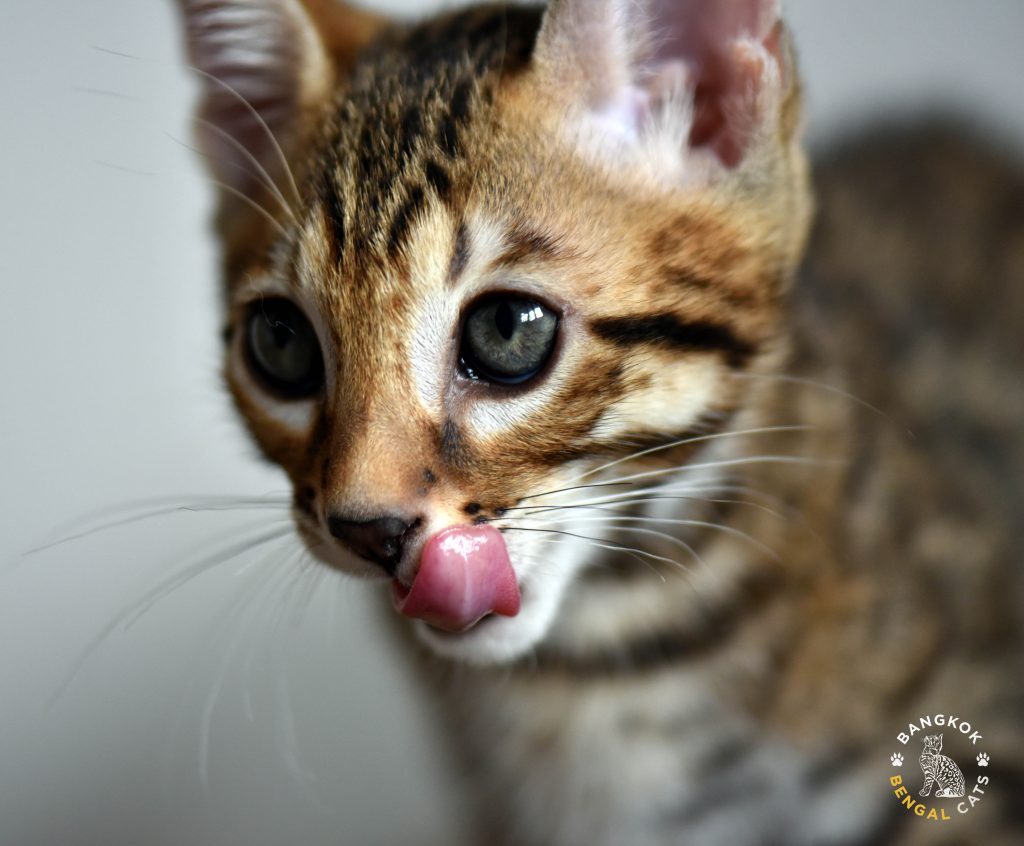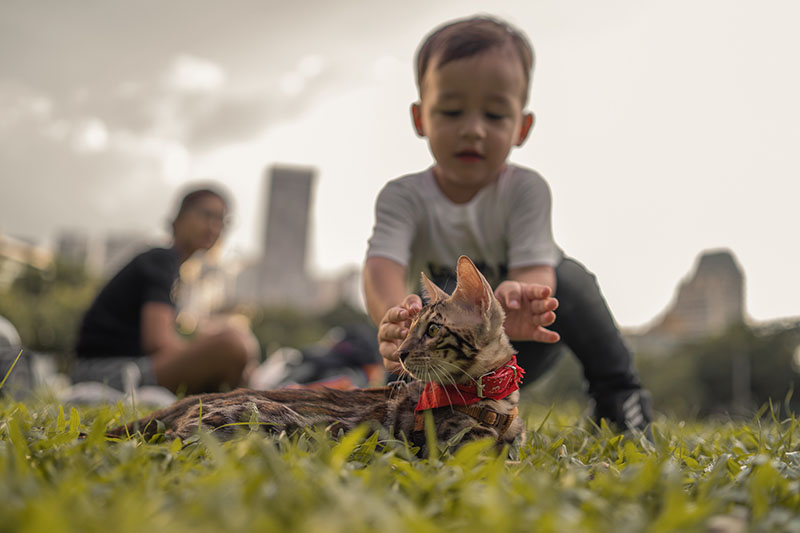The quick answer:
Yes, Bengal cats are hypoallergenic, but this does not mean that they are 100% safe for people with cat allergies. Hypoallergenic cats are cats that leave or produce less allergens compared to other cats.
Bengals do not produce less allergens, but because of some characteristics of their coat, they are more unlikely to cause an allergic reaction to people that is lightly sensitive to these allergens.
The cause of cat allergies:
During the last years the incidence of cat allergies has raised sharply. There are a total of 10 allergens that cause cat allergies, but the major allergen responsible for the typical symptoms of cat allergies (sneezing, itchy eyes, runny nose, etc.) is the protein Fel d 1. This protein is found in the saliva, skin and urine of cats, being the sebaceous glands (located in the skin) the main production site. So the cat allergies do not come because of the cats’ coat and its length as it was believed, but due to a protein that is segregated in the skin, in the saliva and the urine! This protein sheds to the air easily and stays in the airborne attached to small particles that later on are breathed by us, producing allergy to sensitive people to the Fel d 1 protein.
The Bengal case:
Bengals do not produce less Fel d 1 than other breeds, but they are “single coated” cats, meaning the they have less fur than other breeds or cats that have double coat and they shed less hair that contains the protein coming from the skin. Some Bengals have “pelted coat”, a very short fur that contributes to its cleanliness and reduces the Bengals’ need to groom itself, therefore, less saliva and dander with the protein Fel d 1 is spread to the coat and released into the air.
I want a Bengal but I don’t know if I am allergic, what should I do?
First of all you should figure out if you are sensitive to Fel d 1 and if any reaction, how severe it is. Probably you have been to a house with a cat, and if you have experienced an allergic reaction before, you might want to check if Bengals could work for you. One of the easiest and best ways to know is to try to find a house where they have one or two Bengals and visit them. Being in a house with a couple of Bengals for a while can be determining in knowing if you are having any symptoms such as runny nose, itchy eyes, sneezing, etc. Catteries usually have more than 2 or 3 cats, and the amount of Fel d 1 in the air will be much higher than in a house where they keep just a cat or two, so my recommendation would be to better try in a house with a Bengal as a pet instead of a Bengal cattery to be more realistic on what would happen if you decide to bring a Bengal in your life.
I am allergic and I have a cat, what can I do to reduce the allergy symptoms?
There are many things you can do to reduce the amount of Fel d 1 in the air and therefore reduce the symptoms of a mild allergy. Here we mention some of them that can help you.
1. Keeping the coat and skin of the cat at its best will reduce grooming and dander containing the Fel d 1. Omega 3 and a high protein diet will improve the skin and coat condition. 30% of the protein that your cat eats daily goes to its skin. A balanced raw diet and Omega 3 Fatty acids supplements will result in a reduction of dander and shedding.
2. Avoid fabric surfaces where the Fel d 1 sticks easier and it is more difficult to clean. This means that carpet floors or sofas made of fabric do not help; having a hard surface floor and a leather sofa will make it more difficult for the Fel d 1 protein to stick around, and it will be easier to clean.
3. Air purifiers also help reducing dust and small particles in the air that carry this glucoprotein, and therefore the chances and amount of Fel d 1 will be less.
4. If you are not living alone, asking someone else to take care of the cats’ litter will also expose you less to the protein. Cleaning the litter often will also help.
Other interesting facts:
1. Males produce more Fel d 1 than females, but castration also reduces the production of this protein, giving another positive reason among many others to spay or neuter your cats.
2. Bathing your cat will not help a lot, you will wash away the Fel d 1 in their skin and coat, but levels of this protein will return to its original levels in just 2 days.
3. Fel d 1 production in the skin varies depending on the anatomical place. Production in the head is much higher than in the chest.
In conclusion, no cat is allergen-free, but Bengals may be considered hypoallergenic and cause less of an allergic reaction than other cats—you’ll just have to find out for yourself! Please find out before committing to owning one.

References:
Bonnet B, Messaoudi K, Jacomet F, et al. (2018) An update on molecular cat allergens: Fel d 1 and what else? Chapter 1: Fel d 1, the major cat allergen. Allergy Asthma Clin Immunol. 2018;14:14. doi:10.1186/s13223-018-0239-8
https://feline-nutrition.org/answers/answers-why-did-my-cats-fur-get-so-silky [accessed on October 2020].
https://thebengalconnection.com/articles/featured/are-bengal-cats-hypoallergenic/ [accessed on October 2020].
https://www.livescience.com/36578-cat-worse-dogs-allergies-pets.html [accessed on October 2020].
https://www.quality-bengal-kittens.com/blog/blog/are-bengal-cats-hypoallergenic [accessed on October 2020].
https://www.webmd.com/allergies/cat-allergies#1 [accessed on October 2020].
Satyaraj E, Gardner C, Filipi I, Cramer K, Sherrill S, (2019). Reduction of active Fel d1 from cats using an antiFel d1 egg IgY antibody. Immunity, Inflammation and Disease. 7. 10.1002/iid3.244.

